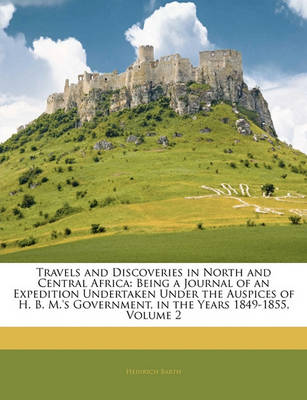Travels and Discoveries in North and Central Africa 5 Volume Set
2 primary works
Volume 1
Born in Hamburg, Henry (Heinrich) Barth (1821-1865) studied history, archaeology, geography and Arabic. He joined James Richardson's 1849 expedition to Africa, which aimed to open the interior to trade and to study slavery. Following the deaths of Richardson (1851) and his colleague Overweg (1852), Barth led the expedition alone. His travels extended to Lake Chad in the east, Cameroon in the south and Timbuktu in the west. He was the first European to use the oral traditions of the local tribes for historical research, learning several African languages, and studying the history, resources and civilisations of the people he encountered. Barth's five-volume account includes plates, engravings and detailed annotated maps. Published in both English and German in 1857-1858, it is still regarded as a major source on African culture. Volume 1 covers the expedition's journey from Tunis to present-day Niger, and includes descriptions of Roman ruins in Libya.
Volume 2
Travels and Discoveries in North and Central Africa: Volume 2
by Heinrich Barth
Published 23 June 2011
Born in Hamburg, Henry (Heinrich) Barth (1821-1865) studied history, archaeology, geography and Arabic. He joined James Richardson's 1849 expedition to Africa, which aimed to open the interior to trade and to study slavery. Following the deaths of Richardson (1851) and his colleague Overweg (1852), Barth led the expedition alone. His travels extended to Lake Chad in the east, Cameroon in the south and Timbuktu in the west. He was the first European to use the oral traditions of the local tribes for historical research, learning several African languages, and studying the history, resources and civilisations of the people he encountered. Barth's five-volume account includes plates, engravings and detailed annotated maps. Published in both English and German in 1857-1858, it is still regarded as a major source on African culture. Volume 2 describes the settlements and peoples found on the journey from Kano to the shore of Lake Chad.

